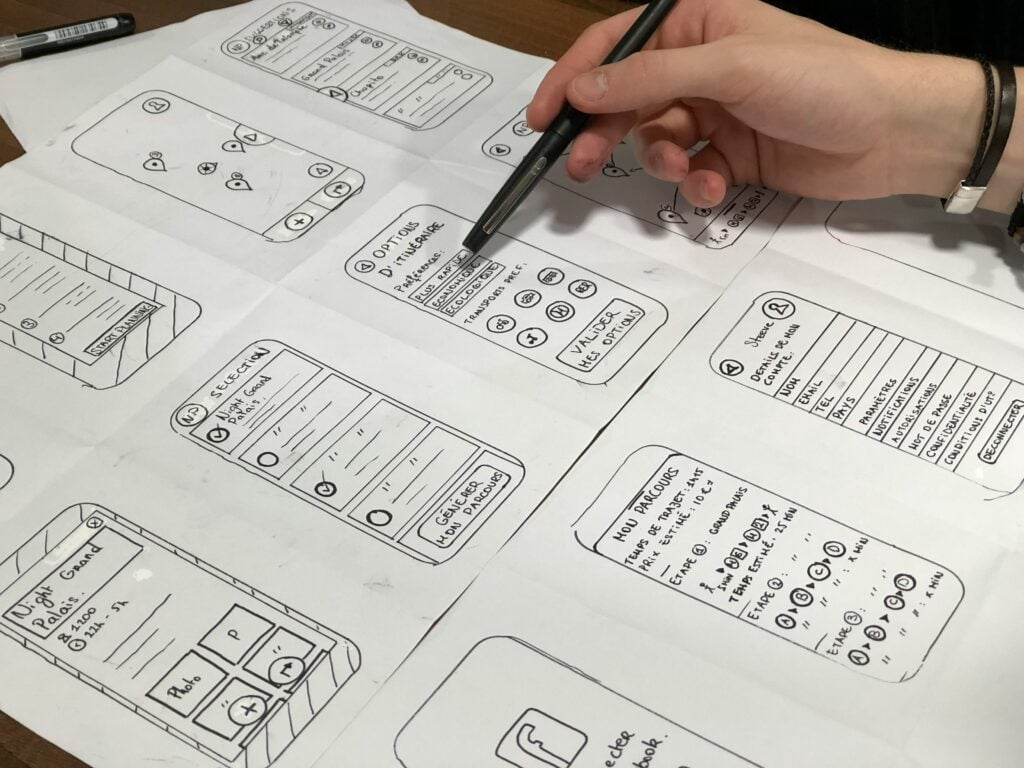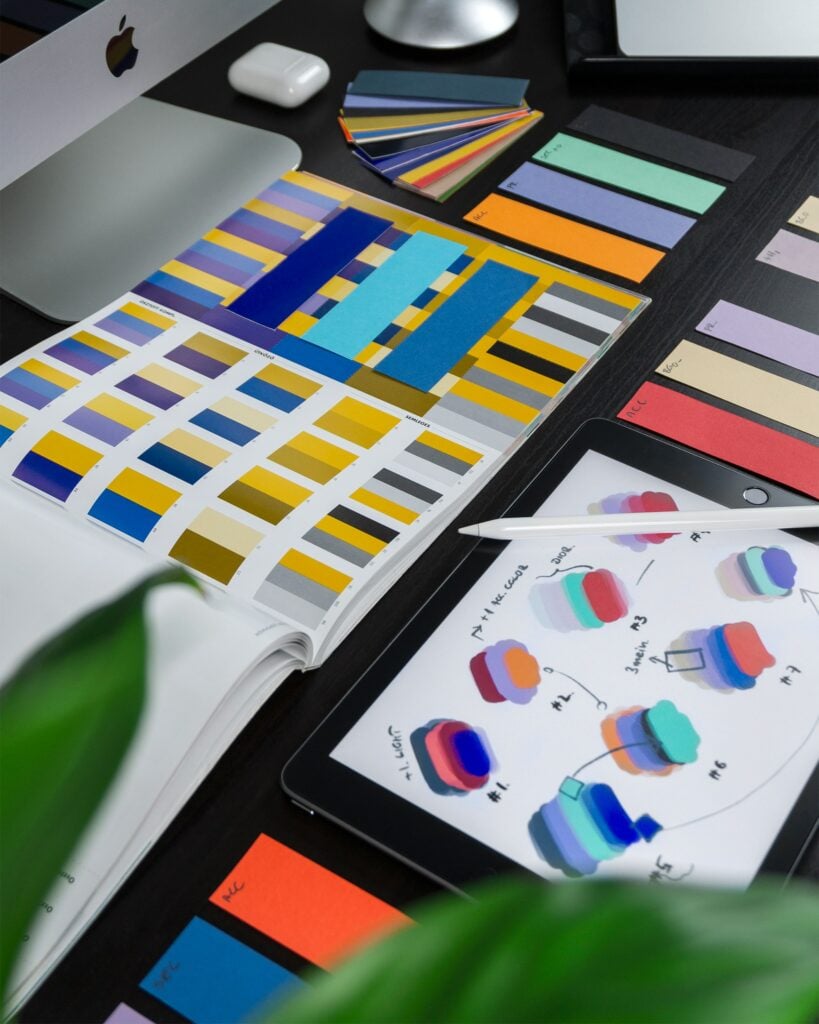Speed and scale used to be a competitive edge. Now they are just table stakes. So, what sets great products apart? A seamless, consistent experience that doesn’t buckle under the pressure of growth or change. The most successful products don’t just look good, they stay coherent across every screen, every team, and every iteration. That kind of design maturity doesn’t happen by chance. It happens with a system built to flex, not fracture.
A well-structured design system is not just a collection of UI components. It is a living foundation that aligns teams, accelerates delivery, and supports long-term product strategy. When done right, it becomes an operational asset: maintaining brand consistency, scaling product offerings, and improving collaboration across teams.
But how do you create a design system that doesn’t just work today but continues to deliver value years from now?
What Is a Design System, Really?
A design system is more than a style guide or component library. It’s a shared set of rules, assets, and tools that brings consistency to product design and development. That includes everything from colour palettes and typography to interaction patterns, design tokens, and documentation.
At its core, a design system enables teams to work faster and smarter, without reinventing the wheel every time. It’s the connective tissue between designers and developers, helping products scale in a coherent and user-friendly way.
Done well, a design system brings structure without stifling creativity. It creates alignment across teams, supports accessibility, and becomes a long-term asset that evolves alongside your product.

1. Start with Purpose, Not Just Patterns
Let’s take a hypothetical case: A B2B SaaS company is scaling rapidly. Each product team builds their own UI toolkit, leading to inconsistencies, duplicated effort, and brand fragmentation. Developers are frustrated. Designers are redoing work. Users feel the disjointedness.
The solution? A design system, but not just any system. One rooted in shared goals.
Before defining components or tokens, clarify the strategic purpose of the design system. What business problems does it solve? Who are its users, designers, engineers, content strategists? What behaviours should it encourage?
A future-ready design system is built with intent. It answers not just what to design, but why it matters. For example, Atlassian’s design system isn’t just about UI, it promotes collaboration and clarity, two pillars of its product philosophy.
Takeaway: A timeless design system starts with a clear mission that aligns with your brand values and product strategy.
2. Design for Change, Not Just Consistency
Many design systems fail because they become frozen in time, too rigid, too prescriptive, too slow to evolve.
Instead, think of your design system as a product, not a project. That means planning for governance, iteration, and contribution from day one. It means establishing a feedback loop, assigning ownership, and allowing room for experimentation.
For example, consider how Shopify’s Polaris design system evolves with input from its merchant community and product teams. It has a clear structure but adapts with new patterns as the business and tech stack evolve.
Build flexibility into your system by:
• Using atomic design principles to break down components into smaller, reusable parts.
• Including versioning and documentation to support gradual adoption.
• Allowing customisation where needed, especially for white-labelling or tiered user experiences.
Takeaway: Longevity comes from adaptability. Treat your design system as a living product with a roadmap.
3. Build Bridges Between Teams
Design systems are as much about people as they are about pixels.
If designers and developers aren’t aligned, your system won’t be adopted, no matter how robust it is. The most resilient systems succeed because they create a shared language and workflow between these roles, helping everyone work more efficiently.
At Sonin, the design system is embedded from the very beginning of a project. It forms the foundation of our design process. As soon as we start designing, we build out the system, establishing tokens, components, and patterns that underpin everything else. Then, when it moves to development, we walk our engineers through the system so they can use those same foundations to build consistent, scalable components. Our web team, in particular, leverages the design system to construct reusable elements before building full screens.
Takeaway: A design system becomes a shared source of truth when it is embedded into both the design and development process from day one.
4. Future Trends: From Systems to Ecosystems
Looking ahead, the rise of AI, voice interfaces, and generative design will stretch traditional design systems. Static style guides won’t cut it. Instead, we’ll need dynamic systems that respond to context, user behaviour, and even automation.
Future-ready design systems will need to:
• Support AI-generated UI patterns and component libraries.
• Integrate with AI-powered design-development synchronisation tools, such as Lovable or Storyboard, which help identify and communicate changes across environments automatically. This keeps designers and developers in sync without relying on manual handoffs or missed updates.
• Use self-healing components that connect directly to live products and usage analytics. These components can highlight inconsistencies, flag areas where users struggle, and even suggest or generate pull requests for review, keeping the system in sync with real-world behaviour.
• Include ethical guardrails to guide AI-driven content or decision-making.
The design systems of tomorrow will behave more like ecosystems: responsive, intelligent, and connected to real-time data flows.
AI Consideration: By embedding metadata, usage analytics, and behavioural context into components, teams can make systems machine-readable, setting the stage for AI-driven optimisation and predictive UX.

Key Actions
Here are five actions to make your design system more resilient and valuable:
• Define your design system’s mission to align with business and user goals.
• Create contribution models so teams can evolve the system together.
• Invest in documentation and onboarding to drive adoption.
• Measure usage and impact regularly, and treat it like a product with clear performance indicators.
• Embed AI-readiness by tagging components and patterns for machine consumption.
Conclusion
A great design system isn’t timeless because it never changes. It’s timeless because it’s designed to change well.
When grounded in business value, embraced across disciplines, and built to evolve, your design system becomes a strategic asset. It reduces waste, increases velocity, and unifies your user experience, both now and in the future.
Top Takeaways
Here are four lasting principles to keep in mind:
• Design systems must serve business goals, not just visual ones.
• The best systems are built like products, with governance, iteration, and user feedback.
• Future-proofing means anticipating change in both technology and user needs.
• AI will transform static design systems into adaptive, intelligent design ecosystems.
TL;DR
• A future-proof design system is a strategic business asset, not just a design tool.
• Start with purpose: align your system with business and user goals.
• Design for flexibility, iteration, and emerging tech like AI.
• Success depends on cross-functional collaboration and adoption.
• Future-ready systems adapt, treat them as evolving products, not one-off projects.